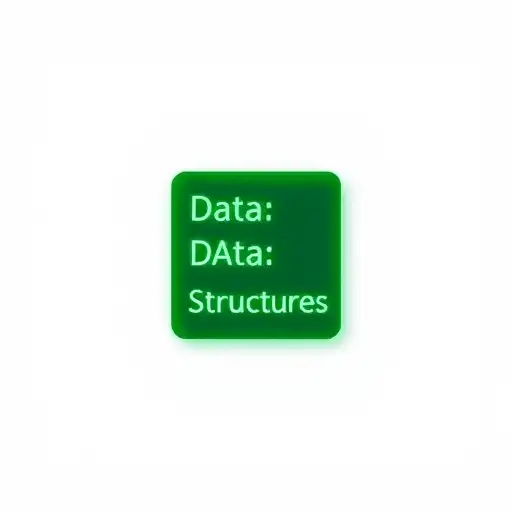A C++ for loop iterator allows you to iterate over a range of values easily, using a specified initialization, condition, and increment.
Here's a code snippet demonstrating a simple for loop iterator:
#include <iostream>
int main() {
for (int i = 0; i < 5; ++i) {
std::cout << "Iteration: " << i << std::endl;
}
return 0;
}
C++ For Loop Iterator: A Comprehensive Guide
Understanding the C++ For Loop
Basic Syntax of the C++ For Loop
The C++ for loop is a control structure that enables repetitive execution of a block of code until a specified condition evaluates to false. The basic syntax is as follows:
for (initialization; condition; increment) {
// Code block to be executed
}
- Initialization: Sets a variable to start counting (e.g., `int i = 0`).
- Condition: Evaluated before each iteration. If true, the loop executes; if false, it ends.
- Increment: Updates the counting variable after each iteration (e.g., `i++`).
Where Iterators Fit In
Iterators introduce a more flexible and powerful paradigm for traversing data structures. When using iterators, you can iterate over collections without concern for the underlying data structure's specific implementation.
This flexibility allows you more control compared to traditional for loops. With iterators, the syntax tends to be cleaner and eliminates the need for index manipulation.
C++ For Loop with Iterators
Introduction to C++ Iterators
C++ provides several iterator types:
- Input Iterators: Allow reading data from a container.
- Output Iterators: Allow writing data to a container.
- Forward Iterators: Allow reading and writing in a single pass.
- Bidirectional Iterators: Allow iteration in both forward and backward directions.
- Random Access Iterators: Allow jumping to any position in the container.
Each type serves a specific purpose, granting programmatic access to a container's elements.
Iterator C++ For Loop Syntax
Using an iterator in a for loop is straightforward. Consider this example illustrating how to iterate over a vector using an iterator:
#include <iostream>
#include <vector>
int main() {
std::vector<int> numbers = {1, 2, 3, 4, 5};
for (std::vector<int>::iterator it = numbers.begin(); it != numbers.end(); ++it) {
std::cout << *it << " ";
}
return 0;
}
In this example:
- `numbers.begin()` returns an iterator pointing to the first element.
- `numbers.end()` returns an iterator pointing past the last element.
- The expression `*it` dereferences the iterator to access the value it points to.
Using C++ Range-Based For Loop
Introduction to the Range-Based For Loop
C++11 introduced the range-based for loop, providing a simplified syntax for iterating over containers without managing iterators explicitly. This loop is particularly useful when iterating through collections like vectors or lists.
Example of a Range-Based For Loop
Here's how to leverage range-based for loops to simplify your code:
#include <iostream>
#include <vector>
int main() {
std::vector<int> numbers = {1, 2, 3, 4, 5};
for (const int& num : numbers) {
std::cout << num << " ";
}
return 0;
}
In this example:
- The loop iterates over all elements in `numbers`.
- Using `const int&` prevents unnecessary copies and ensures that the elements are not modified during iteration.
Advanced Iterator Techniques
Modifying Elements with Iterators
Iterators in C++ can also be used to modify elements within the container. When iterating, you often need access to the elements to change their state. Here’s an illustrative example:
#include <iostream>
#include <vector>
int main() {
std::vector<int> numbers = {1, 2, 3, 4, 5};
for (auto it = numbers.begin(); it != numbers.end(); ++it) {
*it += 1; // Increment each element
}
for (const int& num : numbers) {
std::cout << num << " ";
}
return 0;
}
In this example, we iterate through the vector `numbers` and increment each value by one using the dereferenced iterator `*it`. Understanding this technique is crucial when you need to manipulate container data dynamically.
Common Pitfalls to Avoid
Iterator Invalidations
While iterators are powerful, they come with specific pitfalls. Modifying a container while iterating through it can lead to iterator invalidation, which can cause serious bugs if not managed correctly. For example, inserting or deleting elements modifies the container's structure, often invalidating existing iterators.
Using Non-Dereferenceable Iterators
Another common mistake involves dereferencing invalid or null iterators. Always ensure that your iterator is valid before attempting to access the element it points to. For example:
#include <iostream>
#include <vector>
int main() {
std::vector<int> numbers = {1, 2, 3, 4, 5};
std::vector<int>::iterator it = numbers.begin();
// Ensure 'it' is valid before dereferencing
if (it != numbers.end()) {
std::cout << *it << " "; // Safe dereference
}
return 0;
}
By implementing checks, you can avoid runtime errors that could lead to program crashes.
Conclusion
In summary, the C++ for loop iterator pattern has revolutionized how developers approach data traversal in their programming. By understanding the mechanics of iterators, leveraging range-based for loops, and avoiding common pitfalls, developers can write cleaner, more efficient, and maintainable code.
Explore further by delving into advanced resources and hands-on practice to master iterators and their power in C++. With continued learning and application, you will significantly enhance your C++ programming skills, making you a stronger developer.








